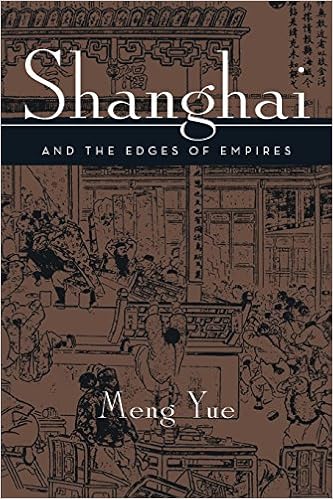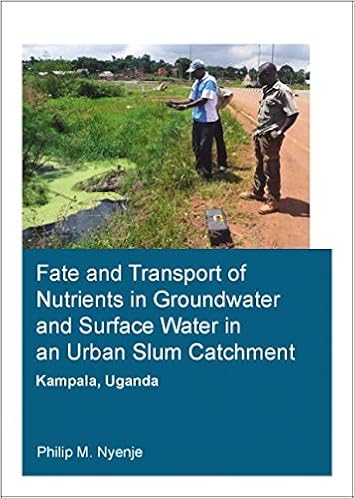
By Jeffrey Becker
The development of China’s inner migrant hard work inhabitants is without doubt one of the most crucial matters rising from the Hu Jintao regime. As China maintains to endure an urbanization approach as profound as any in smooth historical past, there's no doubt migrant employees are affecting monetary and political determination making on the valuable and native degrees. hoping on interviews with over 250 chinese language migrant workers—peasant farmers who've moved to the towns looking for work—as good as interviews with chinese language exertions activists, this e-book explores the evolution of migrant hard work protest in China over the last 3 a long time. It examines how migrant employees interact in protest this day, and the way they make a choice from on hand protest strategies.
While prior stories of chinese language rural to city migration have lengthy said the significance of conventional rural ties among kinfolk, this e-book demonstrates how new city ties:
- help migrant employees research of recent protest strategies,
- navigate the felony process,
- connect with others sharing related disputes,
- and establish extra assets.
The publication additionally examines the expansion and significance of chinese language migrant exertions rights organisations and the position of data communique know-how in migrant exertions protest activity.
The findings provided right here shed new gentle on chinese language state-society kinfolk and financial improvement. in addition, the findings from this publication, which display how financial reforms create possibilities for protest, and the way migrant staff take benefits of those possibilities, have implications for our knowing of contentious politics in different authoritarian states present process related monetary and demographic transition.
Read Online or Download Social Ties, Resources, and Migrant Labor Contention in Contemporary China: From Peasants to Protesters PDF
Similar urban books
The tiny nation of Kuwait grabbed the world's consciousness in the course of the Gulf warfare, within which its average petroleum source turned the envy of its neighboring kingdom of Iraq. yet Kuwait's background is going again lengthy sooner than any oil used to be came across, again to Mesopotamian settlements as early as 3000 BCE. excellent for prime college scholars in addition to common readers, background of Kuwait deals a entire examine how this type of small nation may perhaps, primarily, rule the area with only one normal source.
Shanghai and the Edges of Empires
Even sooner than the romanticized golden period of Shanghai within the Nineteen Thirties, the famed Asian urban used to be notable for its area of expertise and East-meets-West cosmopolitanism. Meng Yue analyzes a century-long shift of urbanity from China’s heartland to its shore. through the interval among the decline of Jiangnan towns similar to Suzhou and Yangzhou and Shanghai’s early twentieth-century upward push, the overlapping cultural edges of a failing chinese language royal order and the encroachment of Western imperialists converged.
With the appearance of AIDS, the proliferation of gangs and medicine, and the uneasy sensation that giant Brother is de facto observing us, the darkish facet of city dwelling appears overshadowing the brighter part of enjoyment, liberation, and chance. The Urbanization of Injustice chronicles those bleak city photographs, whereas taking to job exclusivist politics, globalization thought, and superficial environmentalism.
City casual settlements or slums are turning out to be swiftly in towns in sub-Saharan Africa. typically, a sewer process isn't current and the commonly-used inexpensive onsite wastewater dealing with practices, quite often pit latrines, are often unplanned, out of control and inefficient. hence, so much families do away with their untreated or partly handled wastewater on-site, producing excessive a great deal of foodstuff to groundwater and streams draining those components.
- Lefebvre, love, and struggle : spatial dialectics
- The City and the Grassroots
- Gebrauchsanweisung für die Türkei
- Integrated Land Use and Transport Modelling: Decision Chains and Hierarchies
Additional info for Social Ties, Resources, and Migrant Labor Contention in Contemporary China: From Peasants to Protesters
Sample text
I waited outside until that [expletive] was off from work. I approached him. I told other colleagues to hold on and watch my back. He said: what are you doing? I said I wanted to apologize. I wanted to treat him to dinner. He said: I am busy. I said: you are busy, but I spend nearly 23 24 Chapter 2 three months to file my case and realize my rights. Please give me a favor. That guy said: what if I don’t. I said we would kill your child. 1 Workers often turn to violence strategies such as this after being stymied by the courts.
Why this is the case is examined in detail in chapter three. 3. Labor Arbitration and Court Cases Caused by Illegal Dismissal 2001–2011 Year Total Cases No. Caused By Ending the Labor Contract Percentage of Total Cases 2001 154,621 29,038 19% 2002 184,116 30,940 17% 2003 226,391 40,017 18% 2004 260,471 57,021 22% 2005 313,773 68,873 22% 2006 317,162 67,868 21% 2007 350,182 80,261 23% 2008 693,465 139,702 20% 2009 684,379 43,876 6% 2010 600,865 31,915 5% 2011 589,244 118,684 20% Source: (National Bureau of Statistics 2013) Poor or Unsafe Work Conditions Like disputes over low rather than unpaid wages, complaints about poor working conditions are another example of the interest-based disputes that are beginning to appear.
Growth in the number of strikes in China over this time is described in detail in chapter 2. 4. The law was adopted by the Standing Committee of the Eighth National People’s Congress on July 5, 1994, becoming effective January 1, 1995. 5. See, “The Strength of Weak Ties: A Network Theory Revisited” (Granovetter 1983) for a brief summary of some of this work. 6. ” 7. Appendix A contains an English copy of the questionnaire. Chapter Two The Current Condition of Migrant Labor in China: Common Disputes and Strategies for Action In the spring of 2011, with canisters of gasoline and lighters in hand, Mr.



